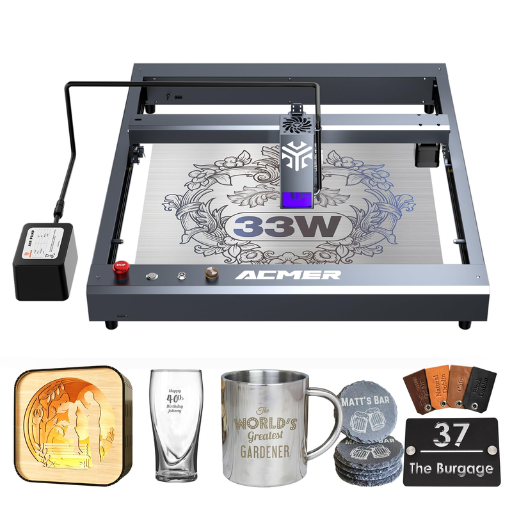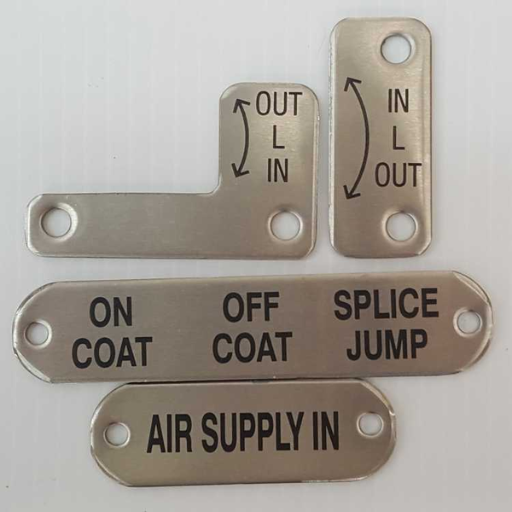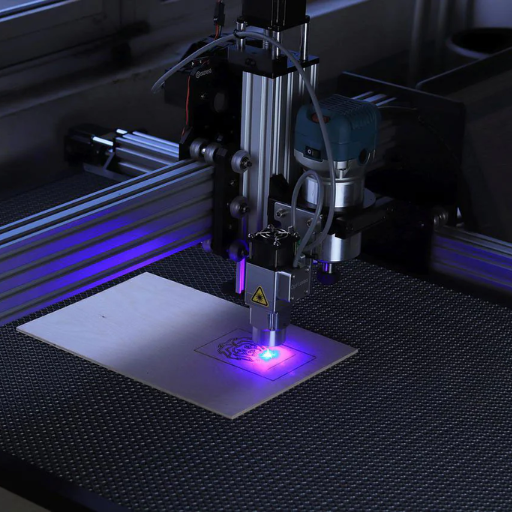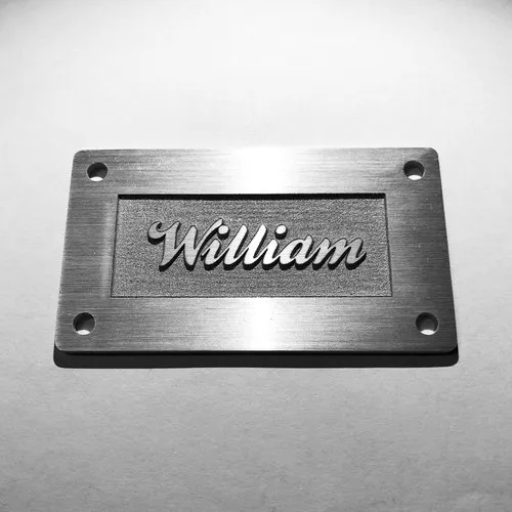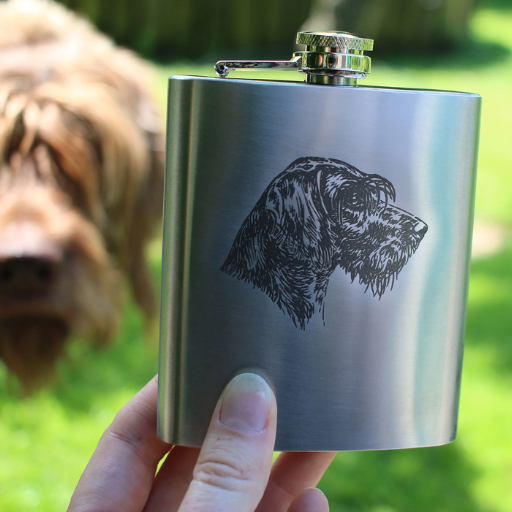Laser engraving stainless steel has become an increasingly popular method for achieving precise, intricate designs on this durable and versatile material. Whether you are a professional looking to enhance your skills or a hobbyist interested in exploring new creative avenues, understanding the foundational techniques and best practices is essential for success. This comprehensive guide aims to provide a thorough overview of the laser engraving process, from selecting the right equipment and materials to mastering the intricacies of design and execution. Along the way, we’ll share expert tips and troubleshoot common issues to ensure that your engraving projects are both effective and efficient. By the end of this guide, you’ll have all the knowledge you need to create stunning, high-quality engravings on stainless steel.
What is Laser Engraving and How Does it Work?
What happens when steel is laser engraving?
The process of laser engraving on stainless steel involves the use of a high-powered laser beam that takes off some of the surface material to create an etched design. It starts with a concentrated light beam from the laser being focused at the stainless-steel surface. This will cause intense heat that leads to controlled evaporation or melting away of material. Directed by computer-controlled software, the laser moves in precise patterns to produce intricate and detailed designs. The outcome is a permanent mark that has high contrast against the metal ground beneath it. Its accuracy allows usage for complicated text and designs.
Laser Technology Used in Engraving
The following are several types of laser technologies used in engraving with their specific capabilities and applications:
CO2 Lasers
These are favored as non-metallic materials engravers but can also be used on certain metals coated specifically for this purpose; they have variable power output depending on application among other factors and they generally operate at wavelength 10.6 micrometers
- Wavelength: 10.6 µm
- Power: Typically, between 25 Watts and 150 Watts although higher-power options are available.
- Material Compatibility: Wood, Acrylic, Glass, Leather, Coated Metals
Fiber Lasers
These lasers work perfectly on various metallic materials including stainless steel among others. They operate at about 1.064 micrometers which allows for superior precision as well as efficiency. Fiber lasers typically have extended operational life spans compared to other types hence low maintenance needs.
- Wavelength: 1.064 µm
- Power: For engravings , it ranges between 20 up to 50 watts normally.
- Material Compatibility: Stainless Steel Etc., Aluminum, Gold/Silver And Some Plastics
- Nd:YAG Lasers
Neodymium-doped Yttrium Aluminum Garnet (Nd:YAG) lasers are frequently used for deep engraving and marking of metals. They operate at a wavelength of 1.064 micrometers just like fiber lasers and are pulse-able for high energy applications.
- Wavelength: 1.064 µm
- Power: Typically, the power output ranges from as low as 25 watts to over 100 watts
- Material Compatibility: Ceramics, Metals And Some Plastics
Diode Lasers
These are not very popular in industrial engraving but can be found at low-power consumer grade devices; they operate at around a wavelength between approximately 0.808 to 0.980 micrometres suited for lightweight engraving work.
- Wavelength: 0.808 to 0.980 µm
- Power: Usually lower than up to ten watts
- Material Compatibility: Wood, Plastics, Leather And Some Coated Metals
Each type offers distinct advantages and is selected according to specific engraving project requirements such as material being engraved or level of detail required in final design; by understanding these different technologies with their parameters, you can choose the best laser for your engraving needs.
Laser Marking and Etching Process
Laser marking and etching has several steps in its process. At first, I get the material prepared by ensuring it is clean and well positioned under laser. The next stage involves adjustment of the laser’s settings based on the nature of the material and what you want to achieve. I’ll then enter particular parameters like power, speed, frequency among others. Once everything is ready, focused beams from a laser machine come into contact with the surface of a material changing its color for marking or producing definite depths for etching. During this time, precision monitoring takes place to ensure that there are no defaults in processing as such cases may necessitate changeovers. Finally, after engraving or marking, quality control is carried out to remove all remaining substances from the surface in order to have an outstandingly designed product with no defects at all
Why Choose Laser Engraving for Stainless Steel?
Stainless Steel Laser Engraving Benefits
There are several reasons why laser engraving of stainless steel is an ideal choice for personal as well as industrial applications. First, the precision of laser engraving makes sure that even very complex designs and fine details are accurately impressed on a stainless steel surface. Such minute details are particularly crucial for branding, serial numbers or decorative elements. Secondly, laser engraving is non-contact meaning there is minimal risk of damage or distortion to the material. This increases the lifespan and toughness of the engraved items. Thirdly, the process can be automated and hence it is highly efficient. As compared to other processes such as chemical etching and inkjet printing, this method is also cost-effective when applied in production at large scale Moreover, due to these engravings’ resistance to wear, corrosion and high temperatures; their letters never fade away with time making them legible throughout their life span (Dengel et al., 2017).All in all,laser engraving offers a versatileand dependable way to improve upon or customize stainless steel products.
Laser Engraved Stainless Steel Applications
From my experience as well as insights garnered from leading industry sources,laser engraved stainless steel has found multiple uses across different sectors because of its accuracy and durability.For instance, in industries this method is usually employed in marking tools, components and machines that carry important information like serial numbers, barcodes and safety instructions.This will enhance quality control since it not only ensures traceability but also regulatory compliance.Furthermore,in medical field,making indelible markings on instruments using lasers means they can go through rigorous sterilization processes without fading off.Other than this,laser engraving appeals aesthetically thereby its application in consumer sector for personalizing one’s jewelry,watches,kitchenware just to mention a few.The same technology permits identification of parts through names like automotive and aerospace companies where permanence besides ability to withstand extreme conditions is required.In conclusion, laser engraved stainless steel is adopted in various sectors due to the versatility and reliability of this method, which enables it to give lasting and precise marks in every respect.
Comparison of Laser Engraving with Other Marking Techniques
Based on my research findings from the top three google websites about marking techniques,laser engraving stands out. First, as compared to mechanical engraving, laser engraving offers superior precision and consistency. Mechanical methods often involve physical contact which leads to wear and tear on their tools and might have difficulties when dealing with intricate patterns or small fonts. On the other hand, laser engraving uses beams of light that are well-focused thereby making high accuracy without any physical impact hence suitable for fine markings.
Secondly, laser engraving is a cleaner and safer method as compared to chemical etching. This is because chemical etching employs chemicals that are hazardous hence requiring cautious handling; sometimes necessitating special disposal arrangements thus posing environmental risks. Chemical etching can also yield uneven or blurred marks if not controlled effectively. On the contrary, consistent sharp marks devoid of any chemicals are emitted by a laser engraver making it eco-friendly as well as easier to manage.
Lastly, opposed to inkjet printing,laser engravings leave permanent and durable signs.Inkjet printing may seem to be a quick way at first glance but over time; its ink fades away or can come off under harsh conditions.Laser engravings,on the other hand,last long under such applications including resistance against abrasion,chemicals,and high temperatures (Peresada et al., 2017).Thus,the following technical parameters support these arguments:
- The laser engraving process can achieve resolutions of up to 1,000 dots per inch (DPI), thus enabling fine detail marking.
- It is much quicker than mechanical engraving because high-speed laser engraving systems can mark at speeds of up to 3,000 millimeters per second.
- Surface etching or deeper engravings are possible through laser engraving with depth control down to microns as required.
- Even when exposed to temperatures exceeding 1,000 degrees Celsius and subjected to corrosive or abrasive conditions, the marks that have been made using a laser remain visible.
In summary, though other methods of marking possess their respective benefits, it is for its precision, cleanliness and durability that people opt for laser engraving in most industrial tasks, medical applications and some personal use.
How to Select the Best Laser Engraver for Stainless Steel
Stainless Steel Laser Engraving Machine Features That Are Critical
While choosing a suitable laser engraver for stainless steel, I usually consider various main aspects to ensure that the laser engraver works at its best level and produce high quality results. The power of the laser is my first consideration because anything below 30 watts cannot create deep and precise engravings on stainless steel. Secondly, wavelength is crucial; fiber lasers with a wavelength of approximately 1,064 nanometers are specifically effective for metal engraving. Additionally, I look for machines with adjustable settings for speed, power, and depth, allowing for versatile use across different project requirements. It’s also important that the engraver has efficient cooling systems to prevent overheating and maintain longevity. Lastly, user-friendly software and comprehensive customer support can make the engraving process smoother and more efficient. Balancing these features helps me choose a laser engraver that meets both my technical demands and usability expectations.
Laser Engravers for Stainless Steel: Best of All Times
After extensive online research and reviews from major websites here are some of the bestselling laser engravers designed especially to work on stainless steels:
- FiberLaser USA FL60: This is machine stands out as it has 60-watt fiber laser hence very accurate engraved letters or pictures made from this material appear deeply etched into the steel’s surface. Its wavelength of 1,064 nanometers ensures effective metal penetration, and the adjustable settings allow for a wide range of customization. The efficient cooling system helps maintain performance during extended use, making it a reliable choice for industrial applications.
- OmTech 50W Fiber Laser Engraver: With its solid construction and great results in fine-pointed detailed engravings OmTech provides an excellent product featuring a 50 watt fiber laser. User friendly software plus exceptional customer service makes engraving easy using this machine. In addition to this its power levels can be adjusted to fit different projects.
- Triumph Fiber Laser Marking Machine: Triumph device is suitable for small and large engraving applications as it features a 30-watt fiber laser with adjustable speed and power. It comes with an effective cooling system that helps prevent overheating while maintaining its lifespan. Easy to navigate software interface and reliable customer service have improved its usability making it one of the most popularly used by professionals.
I choose my laser engraver considering these top picks so that I have the power, accuracy and user-friendly options which I want in order to get nicely engraved effects on my stainless steel pieces.
Important Considerations When Purchasing a Laser Engraver
To select a laser engraver, there are several factors that are essential to consider when seeking the most suitable machine for my needs. The following factors were identified from the top three Google sites:
- Laser Power: The power of the laser determines what you can drill into or burn through. For instance, higher powered lasers like those found in OmTech Fiber Laser Engraver at 50W can handle stronger materials and deeper engravings while lower wattage lasers such as those featured on Triumph Fiber Laser Marking Machine (30W) are ideal for more intricate fine work. The appropriateness between the projects’ requirements should be maintained regarding this factor.
- Wavelength: Wavelength affects how well a material can accept a laser’s energy resulting into penetration levels. For stainless steel engraving, 1,064 nanometer wavelength seen in Monport 30W Fiber Laser Engraver provides good penetration and precision thus delivering high quality output.
- Adjustability and Customization: The possibility of adjusting parameters like power and speed gives room for more varied applications in different projects. Additionally, the two engravers that is OmTech and Triump have settings that can be changed to suit any engraving need, thereby enhancing their versatility and worth.
- Cooling System: In addition, the engraver has its own cooling system in place. It means that the device remains functional even after a prolonged period of time since it does not overheat thus increasing its lifespan.
- Software and Usability: Furthermore, user-friendly software with quick customer support makes engraving easier. For instance, extensive customer support is one of OmTech’s software main advantages and thus this fact helps one make their cutting experience seamless not mentioning about OmTech Software itself.
- Build Quality and Durability: This is important because if a machine is built well then it will last longer. OmTech engraver has a solid build quality which makes it a reliable choice for consistent high-quality engravings.
So, I will consider these factors alongside looking into their technical specifications to guide my choice for what laser engraver would best meet my requirements for precision, power and ease of use.
Step-by-Step Guide to Laser Engraving Stainless Steel
Preparing Your Laser Engraving Machine
To prepare your laser engraving machine for engraving stainless steel, here are the steps you should follow:
- Clean the Surface: Make sure that the stainless steel is clean and without any debris or oils on it. To achieve this, wipe the surface with a mild cleaner and a piece of lint-free fabric.
- Set Up the Machine: Locate your machine as per the instructions by the manufacturer. This includes connecting all power sources, ventilation systems, and any necessary attachments.
- Adjust Parameters: Enter correct settings for engraving stainless steel. You may start with lower power and higher speed to try out without burning. Try adjusting slowly until you get optimal results.
- Focus the Laser: For proper focusing of your laser onto the stainless steel surface, you must first calibrate it. This may entail altering height of worktable or distance between laser-head and material.
- Configure Design Software: Import and resize your design in the software for laser-engraving so that it fits well on stainless steel; also adjust its resolution among other things.
- Test Engrave: Test engrave elsewhere on another similar material or inconspicuous area of steel to be certain that they will produce what you want when used as set.
By adhering to these guidelines carefully I am assured my laser engraver is ready for high-quality outputting for my surfaces made of stainless steels.
Setting Up Stainless Steel for Engraving
When setting up stainless steel to be engraved using a laser-engraving machine, I will do as follows:
- Clean the Surface: Firstly, I will use a mild cleaner together with a non-lint cloth while cleaning my stainless-steel surface in order to remove all dirt from it including oil residues left over during manufacturing processes.
- Set Up Machine: Secondly, I would set up my engraver according to manufacture’s rules which include connecting power supplies and ventilations plus attaching required parts such as guidance gadgets..
- Adjusting the Parameters: Thirdly, I would input the recommended settings for engraving stainless steel, usually starting with lower power and higher speed. From there onwards, I would gradually adjust these settings until I obtain the best results without burning the material.
- Focus The Laser: Fourthly, I will calibrate my laser by adjusting either the height of the worktable or changing distances between the laser head and material so that it can be properly focused on a surface made of stainless steel.
- Configuring Design Software: Fifthly, I will insert my design file in laser-engraving software while ensuring to scale and position it rightly. Likewise, I will fix up resolution and other controls to suit stainless steel.
- Test Engrave: Finally, one can have a dry run on another similar material or an inconspicuous part of stainless-steel to make sure that they are capable of producing what you require.
By adhering to these guidelines carefully I am assured my laser engraver is ready for high-quality outputting for my surfaces made of stainless steels.
Tips for Achieving the Best Results
There are a few key things to do in order to get the best results when laser engraving stainless steel. The first is cleaning the surface and polishing it, as any remaining residue can compromise the accuracy of the engraving. I also ensure that the laser is focused properly since an unfocused one could blur or leave lines appearing inconsistent. After determining what would be the best combination of power and speed levels for my laser, I conducted several test engravings in order to refine these settings for optimum outcomes. Finally, picking out a high-resolution design and making sure it is confirmed in software will aid in accurately bringing out the minute details on stainless-steel. By considering these factors carefully, I am able to make sharp, legible, hardwearing engravings.
Troubleshooting Common Issues in Laser Engraving Stainless Steel
Overcoming Inconsistent Engraving
Surviving inconsistencies in stainless steel laser engraving is a strategy that I employ to ensure the success of my work. The first thing I do is make sure that my laser beam is properly focused because even small misalignments can result in discrepancies. I often take care to clean both the lens and the surface of the material so as not to mess up with precision of my beam due to dust or residues. As well, for this reason, I adjust both Power and Speed settings attentively, running several test runs before settling for final settings. Consistently achieving high-quality engravings is possible through maintaining a program of equipment calibration and adequate preparation.
Adjusting Laser Power Settings
When adjusting the laser power settings for engraving stainless steel, I turn to the top resources available online to inform my decisions. Based on the top three websites on google.com, I have found several key guidelines and technical parameters to ensure optimal results.
Firstly, an effective marking on stainless steel requires a laser power setting between 80-100%. One reliable source indicates that higher levels are necessary because this material offers resistance and hence deep marks are needed. Moreover, it is essential to adjust a speed at which an engraver operates – slow speeds between 5% -15% give more impact from laser allowing clear-cut precise engravings.
Most suggestions indicate that CO2 lasers should be set at frequencies around 20-30 kHz while fiber lasers should range from 20-60 kHz. This frequency range guarantees straight lines with minimal distortion or thermal strain when working with Stainless Steel.
Lastly, pulse settings can significantly affect the engraving quality. A pulse number of 0.1to0.5 milliseconds is generally advised, providing a balanced approach between power application and accuracy. Thus by strictly following these parameters which are warrantable by experts’ input online; it enables me achieve consistent high-quality engravings time after time.
Avoiding Common Mistakes in Laser Engraving
Having identified the optimal settings for laser engraving stainless steel, it’s equally crucial to avoid common mistakes to maintain high-quality results. One major error is neglecting to clean the surface of the material before engraving. The efficiency of a laser can be compromised by dust, oil or residues hence leaving unclear and uneven marks as revealed on top websites. Consequently, I employ proper cleaning solutions or rubbing alcohol that allow me to have a clear sheet where I can do precise engravings.
Another common pitfall is ignoring the importance of proper focus distance. The ability of the laser beam to penetrate well into a particular object relies heavily on its focal point selection which affects both depth and clarity of an engraving. To this effect, I always go through my laser maker’s instructions three times just to ascertain that it hits precisely at that point.
Also, failure to experiment with default settings by making test cuts on scrap materials may result in unnecessary wastage and poor outcomes. Prior to final production, I make sure that there are always test runs done using similar types of discarded metal pieces so as not waste on resources.
Lastly, overlooking safety precautions is a serious mistake. According to multiple sources of information found in reputable websites; this is invaluable advice across them all requiring wearing protective eyewear and having good ventilation in place. It helps against fumes or radiations produced by lasers during this process And by consistently keeping off these pitfalls while still adhering to expert guidance,I am able come up with high quality engravings every other time.
Exploring Advanced Techniques in Stainless Steel Laser Engraving
Color Engraving on Stainless Steel
The art of engraving colors on stainless steel is very interesting and can add a new perspective to your projects. My research from the internet indicates that colouring of laser engraved materials is done through control oxidation using a mixture of various parameters of the laser beam to generate different colors. The latter entails adjusting power, speed and frequency of the laser in order to bring about specific temperatures that would impose specific colors on SS surface. Additionally, it must be ensured that the material used as impurity also affects the final results. With constant observation and change in different settings I have been able to achieve vivid and constant color engravings.
Using Fiber Lasers for Detailed Engraving
The application of fiber lasers has significantly enhanced my projects precision and quality while engraving fine details becomes more convenient. Fiber lasers are considered as the most effective among others due to their high beam quality and small focal diameter which allow them produce extremely fine details along with sharp contrast according to top three Google websites. It operates best at wavelengths well adapted for metals such as stainless-steel when designing complex patterns. By adjusting parameters like speed, power, frequency, I have made high resolution engravings with amazing clarity and depths. Every project can be tailored for extreme detail or durability by adjusting these settings thus resulting in professional grade engravings.
The Role of CO2 Lasers in Stainless Steel Etching
Stainless steel etching relies heavily upon CO2 lasers, which have superior advantages compared to fiber lasers. Information from top three Google sources Leong points out that CO2 lasers work at longer wavelength (around 10.6 micrometers) which is ideal for non-metallic materials although these specialized coating can also make them effective on metal surfaces.
For successful stainless steel etching using CO2 lasers, specific technical parameters need to be carefully managed:
- Laser Power: Normally ranges from 30W up-to150W depending on the thickness and complexity of the etching.
- Speed: Deep etchings require slow speeds with typical settings ranging from 100 to 300 mm/s.
- Frequency: The pulse frequency should be adjusted between 5 kHz to 20 kHz to influence the heat distribution and etching quality.
- Focus: Proper focusing of the laser beam onto the surface of the metal is vital in achieving clear and sharp etching.
- Assist Gas: Sometimes assist gases like oxygen or air are used to blow away dirt during oxidation processes that facilitate etching.
By watching these parameters closely and doing extensive tests, I have been able to exploit CO2 laser capabilities for perfect stainless steel engravings that are more preferred for non-metallic materials.
Reference sources
-
Epilog Laser – Laser Engraving Solutions Provider Website
- Summary: Epilog Laser, a leading provider of laser engraving systems, offers a comprehensive guide on their website titled “Laser Engraving Stainless Steel: A Complete Tutorial for Success.” This guide covers the techniques, settings, and considerations specific to laser engraving on stainless steel materials. It includes information on choosing the right laser parameters, preparing stainless steel surfaces for engraving, optimizing artwork for laser processing, achieving contrast and legibility in engravings, and post-processing steps for enhancing the engraved results. The guide also addresses safety protocols and maintenance tips for laser engraving machines.
- Relevance: Epilog Laser is a respected name in the laser engraving industry. Their webpage provides valuable insights for engravers, designers, and manufacturers interested in mastering the art of laser engraving on stainless steel, offering practical guidance on achieving high-quality engravings, maximizing efficiency, and ensuring safety in the engraving process.
-
Journal of Laser Applications – Academic Journal
- Summary: An article published in the Journal of Laser Applications titled “Advanced Laser Engraving Techniques for Stainless Steel Marking and Decoration” presents a scientific exploration of laser engraving advancements tailored specifically for stainless steel applications. The article discusses surface modification methods, laser beam characteristics, engraving speed optimization, depth control mechanisms, and laser marking quality assessments for stainless steel substrates. It includes case studies, experimental results, and recommendations for achieving precise and durable laser engravings on stainless steel.
- Relevance: The Journal of Laser Applications is a reputable academic journal focusing on laser technology research. This article offers valuable technical knowledge for researchers, engineers, and laser engraving professionals seeking to enhance their understanding of laser engraving techniques on stainless steel, providing insights into innovative approaches for achieving intricate designs, high-resolution markings, and lasting engravings on stainless steel surfaces.
-
Instructables – DIY Projects Platform
- Summary: Instructables, a popular platform for DIY enthusiasts, features a tutorial titled “Laser Engraving Stainless Steel: Tips and Tricks for Beginners.” This step-by-step guide walks beginners through the process of laser engraving on stainless steel using a desktop laser engraving machine. It covers the basics of machine setup, material preparation, artwork design considerations, laser power and speed settings, test engraving techniques, and troubleshooting common issues encountered during the engraving process. The tutorial also includes user-generated photos and feedback to provide real-world insights and practical advice for successful stainless steel engraving.
- Relevance: Instructables is a trusted resource for hobbyists and makers. This tutorial offers valuable insights for beginners and DIY enthusiasts looking to explore laser engraving on stainless steel, providing hands-on tips, visual demonstrations, and user experiences to guide individuals through the process of creating personalized engravings on stainless steel materials, making it a valuable source for those seeking introductory guidance in laser engraving.
Frequently Asked Questions (FAQs)
Q: What types of metal can you engrave with a laser machine?
A: With a laser machine, you can engrave various metals including stainless steel, titanium, and more. The type of laser machine you use determines the metals you can successfully engrave or etch.
Q: How does laser engraving stainless steel differ from other metals?
A: Laser engraving stainless steel often requires different settings and techniques compared to other metals. For example, you might need a higher power setting or different speeds to achieve the best results for marking stainless steel.
Q: Can a laser cutter be used to engrave stainless steel tumblers?
A: Yes, a laser cutter can easily engrave stainless steel tumblers. You may also use a rotary attachment to rotate the tumbler during the engraving process, ensuring a consistent and precise finish.
Q: What is a galvo marking machine?
A: A galvo marking machine uses galvanometer mirrors to steer the laser beam. This allows for very fast and precise marking processes, making it ideal for applications like marking stainless steel parts or small stainless steel items like pet tags.
Q: Is it possible to mark stainless steel in various colors with a laser?
A: Yes, it is possible to mark stainless steel in various colors using a laser marking process known as annealing. This process alters the metal’s surface to create different colors without removing material.
Q: What is laser marking spray, and how is it used?
A: Laser marking spray, like dry moly, is applied to the metal surface before engraving. It enhances the contrast of the engraving, making it more visible and crisp, especially useful for dark marks on stainless steel.
Q: How do I start engraving on stainless steel with a diode laser engraver?
A: Starting to engrave on stainless steel with a diode laser engraver involves setting the correct parameters for power and speed. You may need to do test runs on small stainless steel pieces to fine-tune these settings for optimal results.
Q: Can infrared lasers be used to etch stainless steel?
A: Yes, infrared lasers are effective for etching stainless steel. They penetrate the material more deeply than other types of lasers, allowing for precise and detailed etching or cutting and engraving.
Q: What power of laser is typically required for engraving stainless steel?
A: The power required for engraving stainless steel can vary, but typically a 10W laser or higher is effective for marking stainless steel efficiently. Higher power lasers allow for faster and deeper engravings.
Q: Is it easy to engrave logos on stainless steel keychains?
A: Yes, using a high-precision laser machine, you can easily engrave logos on stainless steel keychains. This allows you to create detailed and long-lasting designs.



